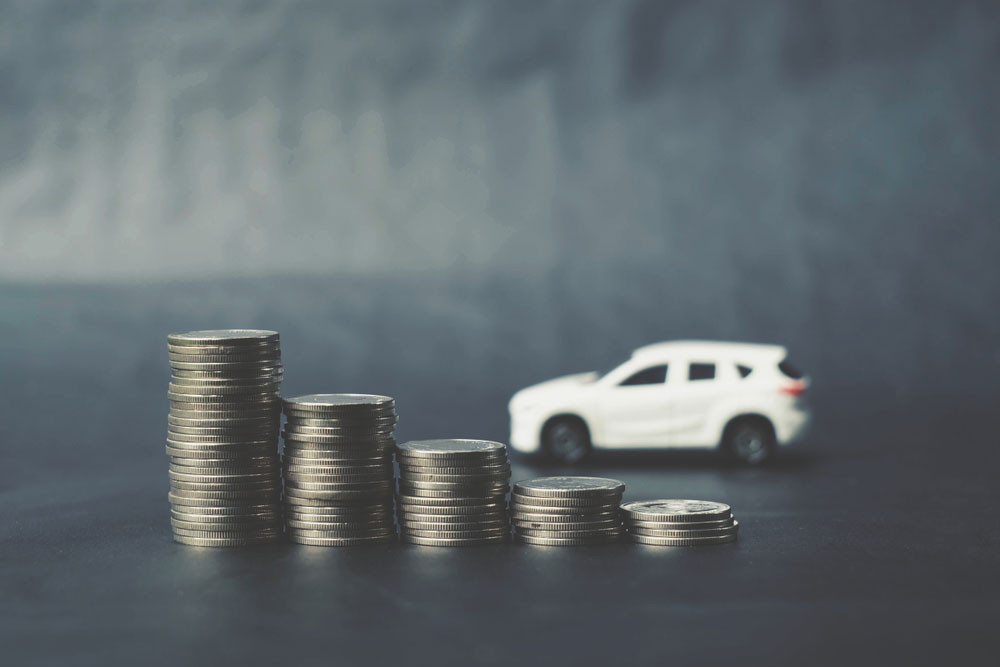The time is just right to go for a new set of wheels — car makers are offering attractive deals and discounts, interest rates on bank loans have fallen and dealers have unsold inventory they would be keen to get rid of. Traditionally, many Indians look to book vehicles during this festive season.
However, there are several ways to finance a new car. You should consider visiting the local dealership of your preferred car maker to get a better understanding of not just the features of your favourite car but also your financing options. Typically, the loan taken to finance a new vehicle is a car loan. But did you know you could just as easily buy a car using a personal loan?
Some borrowers have wondered why they shouldn’t just go for a personal loan. However, borrowers must understand the key differences between a car loan and a personal loan.
Secured versus unsecured
Let’s jump to the basic difference between a car loan and a personal loan. A car loan is a secured loan. The loan is provided against a security, which is the car itself. Your car is hypothecated to your bank during the loan tenure. In simpler terms, the bank owns the car till your debt is repaid in full.
Once the loan is paid, you’ll need to do a little bit of paperwork to get the hypothecation removed at the local RTO. An extra step, but no big deal. If you fail to repay your loan, the bank can repossess the car to recover its dues. A car loan can be taken only for the purpose of purchasing a car.
A personal loan is an unsecured loan provided without a collateral. Also, the bank need not know the reason for taking such a loan. You may take it for funding a holiday, refurbishing your home, or even buying a car. As it is an unsecured loan, your car is not hypothecated to the bank, and, therefore, cannot be repossessed by the lender. However, there are several consequences of failing to repay your personal loan — your credit score takes a hammering and legal action can be taken against you if your post-dated cheques bounce.
Interest rate matters
Another difference between secured and unsecured loans is the interest rate. These days, car loans have rates ranging from 9 per cent to 15 per cent per annum. However, a personal loan from the same lender may charge 11 per cent to over 25 per cent per annum.
Let’s examine the impact on your wallet from the differing rates.
Assume you have taken a loan of Rs 6 lakh for five years. On a car loan at 10 per cent interest, your EMI will be Rs 12,748 and your total interest will be Rs 1.64 lakh.
On a personal loan charging 15 per cent interest, your EMI will be Rs 14,274 and your total interest will be Rs 2.56 lakh. Higher interest rates increase your overall cost of ownership and this is bad for depreciating assets such as a car whose value starts falling from the day you purchase it. Therefore, you should ideally go with the option that costs you less interest.
Credit crore
Let’s also examine situations where the ability to choose is out of your hands. A car loan from a bank, for example, will have an eligibility criteria. What if you don’t meet it? You will have no option but to try other options, one of which could be taking a personal loan, which is available to you but at a much higher interest rate.
Credit scores form part of the loan eligibility math and borrowers with scores above 750 get the best deals while those with lower scores pay higher rates.
Margin money
Let us now talk about loan-to-value ratio. Car loans do not finance 100 per cent of your car purchase. Lenders will typically finance up to 80-100 per cent of your car’s showroom price, or up to 85 per cent of the on-road price. The rest — accessories, registration, taxes, insurance — needs to be borne by you. Therefore, if you have the liquidity and can pay the margin money, go for a car loan because it is likely to be cheaper even if it doesn’t finance all your costs.
However, when you don’t have the requisite liquidity and do not want to be bothered by the problems caused by the loan-to-value ratio, you may consider going for a personal loan. It can cover the whole of your on-road price (not just the showroom price), assuming you are eligible to borrow that amount.
Want a longer tenure?
On any loan, a long loan tenure means smaller EMIs and larger interest payment, while a shorter tenure means bigger EMIs but interest savings in the long run. Therefore, you must seek the optimum loan tenure where your EMIs are manageable and the long-term interest is not too high. Ideally, all your EMIs should add up to no more than 40 per cent of your take-home pay.
Car loan tenures typically range from one year to seven years. Personal loan tenures range from a few days to five years. You must find the balance between finding the right EMI, the right tenure, paying the lowest interest rate, and not struggling with liquidity. Even with the shorter tenure of the personal loan, you may find that its overall interest is higher than that of a car loan with a longer tenure.
To sum up, if you have the margin money, or your credit score is low then go for a car loan. This tailor-made financing facility will cost you less in terms of interest too. If you don’t have the margin money, but have a good credit score, take a personal loan.
The writer is CEO of `BankBazaar.com`










